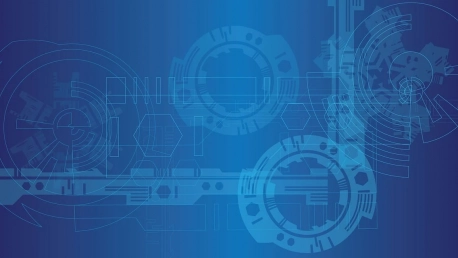The landscape of household appliances and consumer electronics is rapidly evolving, driven by technological innovation and consumer trends. The devices we depend on daily are becoming smarter, more connected, and consequently, more complex. This complexity has precipitated a growing need for specialized services to support installation, maintenance, repair, and optimization. With the expansion of smart technologies and Internet of Things (IoT) capabilities, the market for such services is not just growing—it’s becoming more specialized and sophisticated. Infinity Business Insights projects substantial growth in this sector, signaling a plethora of opportunities and challenges that will shape the services industry. This article will dissect the current state, trends, and evolving demands of appliance and tech service markets.
The Growing Need for Specialized Electronic Services
Gone are the days when setting up a new appliance or device was a simple, do-it-yourself affair. Today’s technology demands a certain level of expertise, particularly with installations that necessitate not just physical setup but also digital integration. Professionals are increasingly called upon to ensure devices work at peak performance, reducing the risk of early obsolescence. This is not just a matter of convenience but also about extending the lifecycle of products and making them as energy efficient as possible. As consumers invest in advanced electronics, they also expect responsive and adept services to go along with their purchases, solidifying the role of expert technicians in the modern home.
The Market Surge in Smart Technology Services
Smart home technology is rapidly transforming our daily interactions with various devices at home. Yet, this advancement is bringing complexity to our device ecosystems, necessitating robust services to manage connectivity and timely software updates. As smart appliances and systems become more prevalent, consumers increasingly need support to seamlessly integrate these varied devices into compatible networks. There’s a clear trend toward service providers needing to diversify their skills beyond traditional mechanical repair; they must now become adept in technology to address the interconnected nature of smart homes. This shift underscores the importance of tech fluency in ensuring that consumers can maximize the potential of their interconnected devices, affirming the evolving nature of technical services in the age of smart homes.
Increasing Demand for Support and Sustainability
A trend that’s shaping the future of electronic services is the move towards sustainable practices. The throwaway culture is being challenged by an increasing emphasis on repair and refurbishment, driven by environmental consciousness and economic practicality. Infinity Business Insights recognizes that this not only benefits the consumer in terms of cost savings but also significantly impacts the reduction of e-waste. Services that offer device longevity correspond with growing consumer expectations for sustainability, and as a result, service providers are rethinking their business models to cater to these demands.
The Competitive Landscape and Market Projections
The electronic services sector is thriving, led by key players like Geek Squad and uBreakiFix, amid fierce competition. Various companies are carving out their own market segments by offering a wide array of unique services to gain customer loyalty. The industry is riding high on positive growth projections from Infinity Business Insights, which forecasts a steady 4.96% CAGR from 2024 to 2030. This projected growth is propelled by the ongoing digital transformation, which is prompting companies in the field to continuously innovate and stand out in a saturated market. The push towards digitization across all sectors fuels the need for expert electronic services, ensuring a robust future for the industry. Service providers are responding by enhancing their offerings and adapting to new technologies to meet the evolving demands of consumers, who increasingly rely on digital gadgets in their daily lives.
The Advent of Remote Diagnostics and Repairs
The future brings the prospect of remote diagnostics and repairs into sharper focus, innovations that could redefine the boundaries of service provision. Thanks to IoT, service technicians are increasingly able to diagnose and sometimes resolve issues without physically visiting the consumer’s home. This efficiency can lead to faster resolutions and lower costs, while also posing significant challenges in terms of data security and customer trust. The rise of these remote services speaks to a broader industry trend towards digital-first customer support strategies.
The Rise of Subscription-Based Service Models
Subscription-based models are on the rise, appealing to consumers with their predictability and simplified experiences. These models offer continuous assistance, upkeep, and frequent updates in exchange for a regular payment, which mitigates worries regarding sudden expenses and equipment unavailability. From a commercial viewpoint, subscriptions are beneficial as they ensure steady income and help in building lasting customer relationships.Nonetheless, businesses have to deliver exceptional service quality and reliability to maintain their subscriber base amidst a competitive landscape. The subscription model demands companies to commit to excellence, ensuring that customers feel their ongoing investment is justified. As a result, such models are reshaping the way businesses approach customer engagement and revenue generation, with a focus on establishing a dependable and satisfying customer journey that extends over time. This approach not only benefits consumers by removing the stress of unforeseen costs but also aids companies in achieving financial stability and fostering robust customer loyalty.
The Impact of Skilled Worker Shortages & Pricing Pressures
Notwithstanding the positive trends, the service market for appliances and electronics faces significant challenges, such as the scarcity of skilled workers and pressures to keep prices competitive. Demands for a more technically savvy workforce are rising, just as skilled trades and technical education is seeing a decline in enrollment. Coupled with price-sensitive consumers who often compare the cost of services to the price of new devices, these challenges could limit market potential unless they are creatively and proactively addressed.
Emerging Technologies in Customer Service Solutions
Augmented Reality (AR) and Virtual Reality (VR) are increasingly integral to customer service, offering experiences that elevate traditional support methods. These technologies facilitate a deeper, more engaging form of interaction, such as allowing customers to follow immersive step-by-step guides to solve problems or engage in virtual face-to-face consultations with experts from the comfort of their own homes. As these experiences become more familiar to consumers, they are expected to set new standards in service provision.The strategic adoption of AR and VR enables service providers to differentiate their offerings with advanced, interactive, and highly effective assistance. It empowers them to address complex customer queries with greater clarity and immersive detail, potentially enhancing satisfaction and loyalty. As the market evolves with these emerging tools, companies that are early adopters can establish themselves as innovative leaders. Consequently, integrating AR and VR into customer service functions is becoming an imperative for businesses seeking to maintain a competitive advantage and cater to the tech-savvy customer base that demands more engaging and technologically enriched service interactions.
Strategic Insights for Industry Stakeholders
The appliance and tech service sectors face a dynamic business environment, with digital transformation, sustainability, and the rise of subscription models being pivotal. Companies must adapt by leveraging modern technologies and aligning with eco-friendly practices to stay competitive. Shifting to service subscriptions can offer a steady revenue stream. However, navigating this terrain involves understanding changing regulations and investment patterns, which can present both opportunities and challenges. To stay ahead, industry players should be flexible and attuned to consumer trends, ensuring they’re well-positioned for evolving service expectations. This agility will be essential for maintaining and enhancing their market presence as the industry’s future unfolds.









